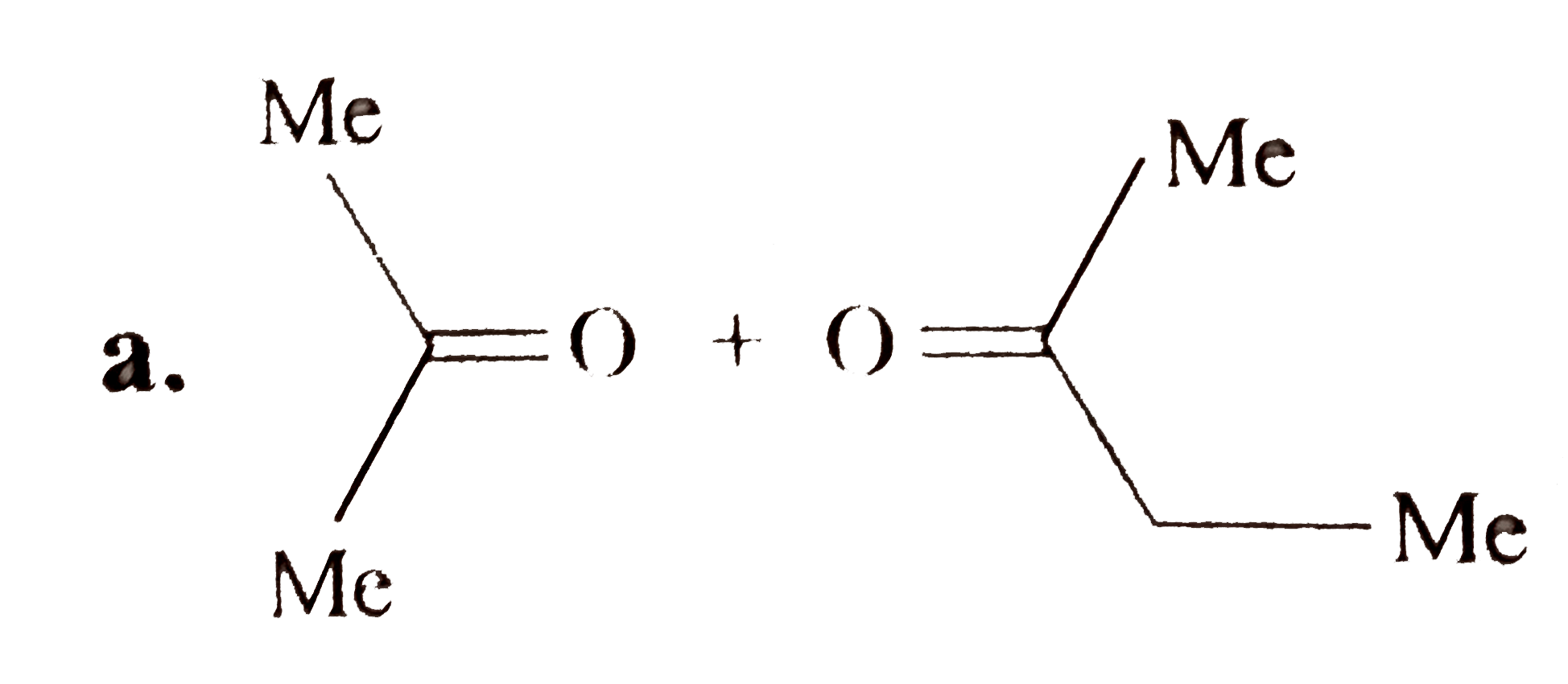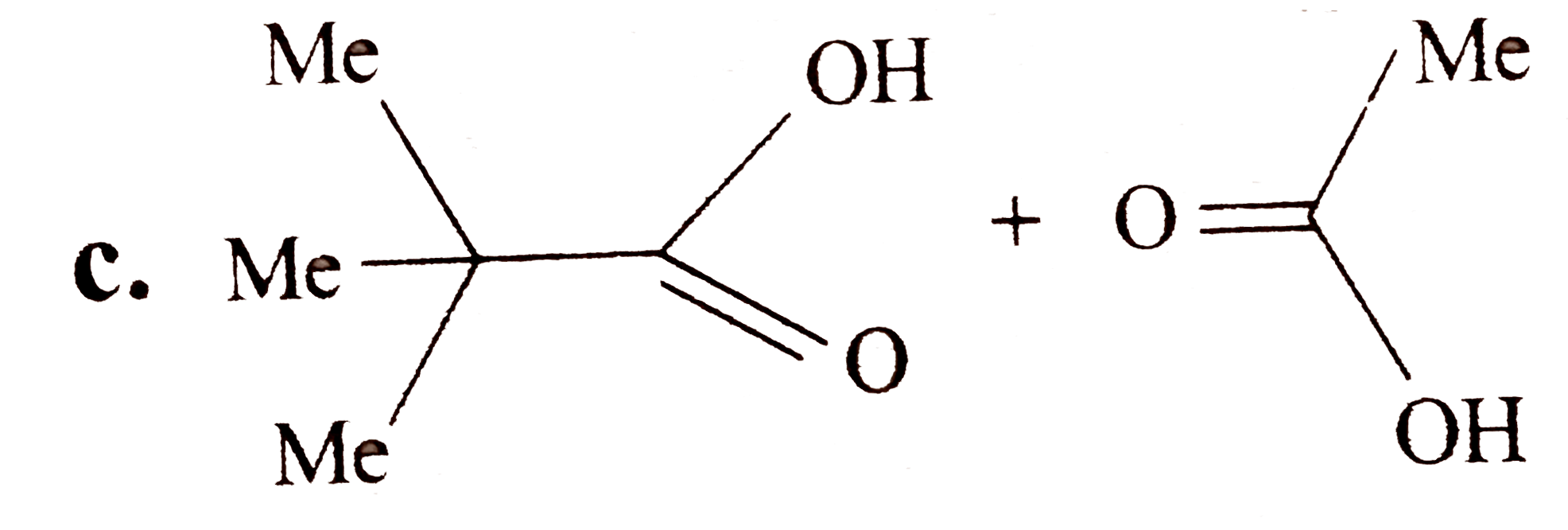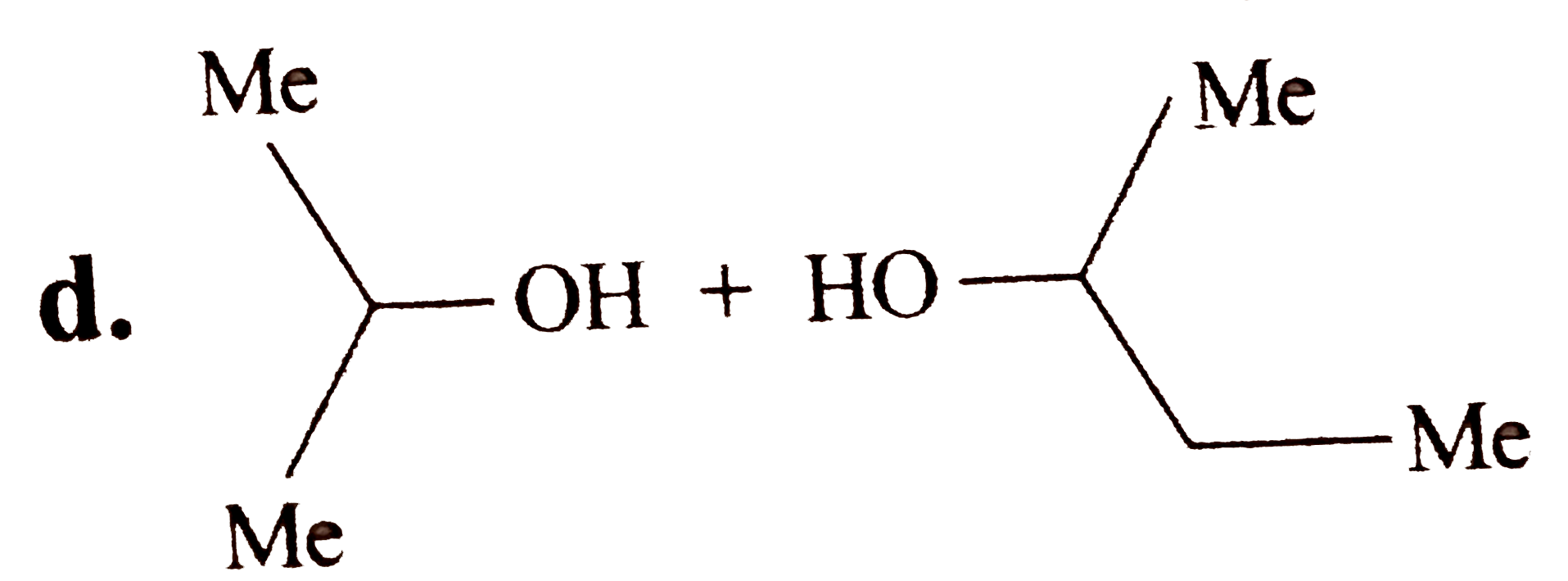Refer to Question. When the compound (B) on ozonolysis is followed by oxidation with H2O2, the products are :




The correct Answer is:a
To solve the problem, we need to analyze the ozonolysis of compound (B) and the subsequent oxidation with H₂O₂. Here’s a step-by-step breakdown of the solution:
Step 1: Understand Ozonolysis
Ozonolysis is a reaction where an alkene is cleaved by ozone (O₃) to form carbonyl compounds. This process involves breaking the carbon-carbon double bond and adding oxygen to the resulting fragments.
Hint: Remember that ozonolysis typically results in the formation of aldehydes or ketones.
Step 2: Identify the Structure of Compound (B)
Assuming compound (B) is an alkene, we need to visualize its structure. For this example, let’s consider a simple alkene like 2-butene (CH₃-CH=CH-CH₃).
Hint: Draw the structure of the alkene you are considering to visualize the double bond.
Step 3: Perform Ozonolysis
When 2-butene undergoes ozonolysis, the double bond is broken, and oxygen is added to the fragments. This results in the formation of two carbonyl compounds:
1. Acetone (CH₃-C(=O)-CH₃)
2. Acetaldehyde (CH₃-CH₂-C(=O)-H)
Hint: After breaking the double bond, remember to add oxygen to both ends of the broken bond.
Step 4: Identify the Products
The products of ozonolysis from 2-butene are acetone (a ketone) and acetaldehyde (an aldehyde).
Hint: Identify whether the carbonyl compounds formed are aldehydes or ketones, as this will affect the next step.
Step 5: Oxidation with H₂O₂
Now, we need to consider the oxidation of the products with hydrogen peroxide (H₂O₂).
- Aldehyde (Acetaldehyde): This will be oxidized to a carboxylic acid (acetic acid).
- Ketone (Acetone): Ketones generally do not undergo oxidation with H₂O₂.
Thus, after oxidation, we will have:
1. Acetic acid (from acetaldehyde)
2. Acetone remains unchanged.
Hint: Remember that aldehydes are more easily oxidized than ketones.
Step 6: Final Products
The final products after ozonolysis followed by oxidation with H₂O₂ are acetic acid and acetone.
Hint: Summarize the final products clearly to ensure you understand the outcome of the reactions.
Conclusion
The products obtained from the ozonolysis of compound (B) followed by oxidation with H₂O₂ are acetic acid and acetone.
Ozonolysis is a reaction where an alkene is cleaved by ozone (O₃) to form carbonyl compounds. This process involves breaking the carbon-carbon double bond and adding oxygen to the resulting fragments.
Assuming compound (B) is an alkene, we need to visualize its structure. For this example, let’s consider a simple alkene like 2-butene (CH₃-CH=CH-CH₃).
When 2-butene undergoes ozonolysis, the double bond is broken, and oxygen is added to the fragments. This results in the formation of two carbonyl compounds:
2. Acetaldehyde (CH₃-CH₂-C(=O)-H)
The products of ozonolysis from 2-butene are acetone (a ketone) and acetaldehyde (an aldehyde).
Now, we need to consider the oxidation of the products with hydrogen peroxide (H₂O₂).
- Ketone (Acetone): Ketones generally do not undergo oxidation with H₂O₂.
1. Acetic acid (from acetaldehyde)
2. Acetone remains unchanged.
The final products after ozonolysis followed by oxidation with H₂O₂ are acetic acid and acetone.
The products obtained from the ozonolysis of compound (B) followed by oxidation with H₂O₂ are acetic acid and acetone.
Topper's Solved these Questions
- ALKENES AND ALKADIENESBOOK - CENGAGE CHEMISTRY ENGLISHCHAPTER - ALKENES AND ALKADIENESEXERCISE - Archives(ASSERTION-REASIOING)
4 Videos
- ALKENES AND ALKADIENESBOOK - CENGAGE CHEMISTRY ENGLISHCHAPTER - ALKENES AND ALKADIENESEXERCISE - Fill in the Blanks
3 Videos
- ALKENES AND ALKADIENESBOOK - CENGAGE CHEMISTRY ENGLISHCHAPTER - ALKENES AND ALKADIENESEXERCISE - Multiple Correct Answer Type
41 Videos
- ALKANES AND CYCLOALKANESBOOK - CENGAGE CHEMISTRY ENGLISHCHAPTER - ALKANES AND CYCLOALKANESEXERCISE - Archives
13 Videos
- ALKYNESBOOK - CENGAGE CHEMISTRY ENGLISHCHAPTER - ALKYNESEXERCISE - Exercises (Archives - Analytical and Desriptive Type)
4 Videos
Similar Questions
A compound 'X' on ozonolysis followed by reduction gives an aldehyde, C2H4O and 2-butanone. Compound 'X' is:
View SolutionWhen H2O2 is oxidesed, the product is
View SolutionGive the products formed on reduction with LAH and oxidation with H2O2, of the compound butan-2-one.
View SolutionAn alkene (A)C16H16 on ozonolysis gives only one product (B)(C8H8O). Compound (B) on reaction with NH2OH followed by reaction with H2SO4,Δ gives N - methyl benzamide the compound 'A' is -
View SolutionWhen SOCl2 reacts with H2O products formed is/are:
View SolutionWhen POCl3 reacts with H2O products formed is/are:
View SolutionOxidation number of O in H2O2 will be
View SolutionWhich of the following compound on oxidative ozonolysis give malonic acid as only product ?
View SolutionHydrocarbon (A) C6H10 on treatment with H2Ni,H2/Lindlar's catalyst or Na/liq. NH3 forms three different reduction products (B), (C), (D) respectively. (A) does not form any salt with ammonical AgNO3 solution, but (E) forms salt on heating with NaNH2 in an inert solvent. Compound (E) reacts with CH3l to give (F). Compound (D) on oxidative ozonolysis gives n-butanoic acid along with other product.
(F) on ozonolysis will produce -
View SolutionObserve the following reactions and answer the following questions

The product B on heating with H2O produces :
View Solution
